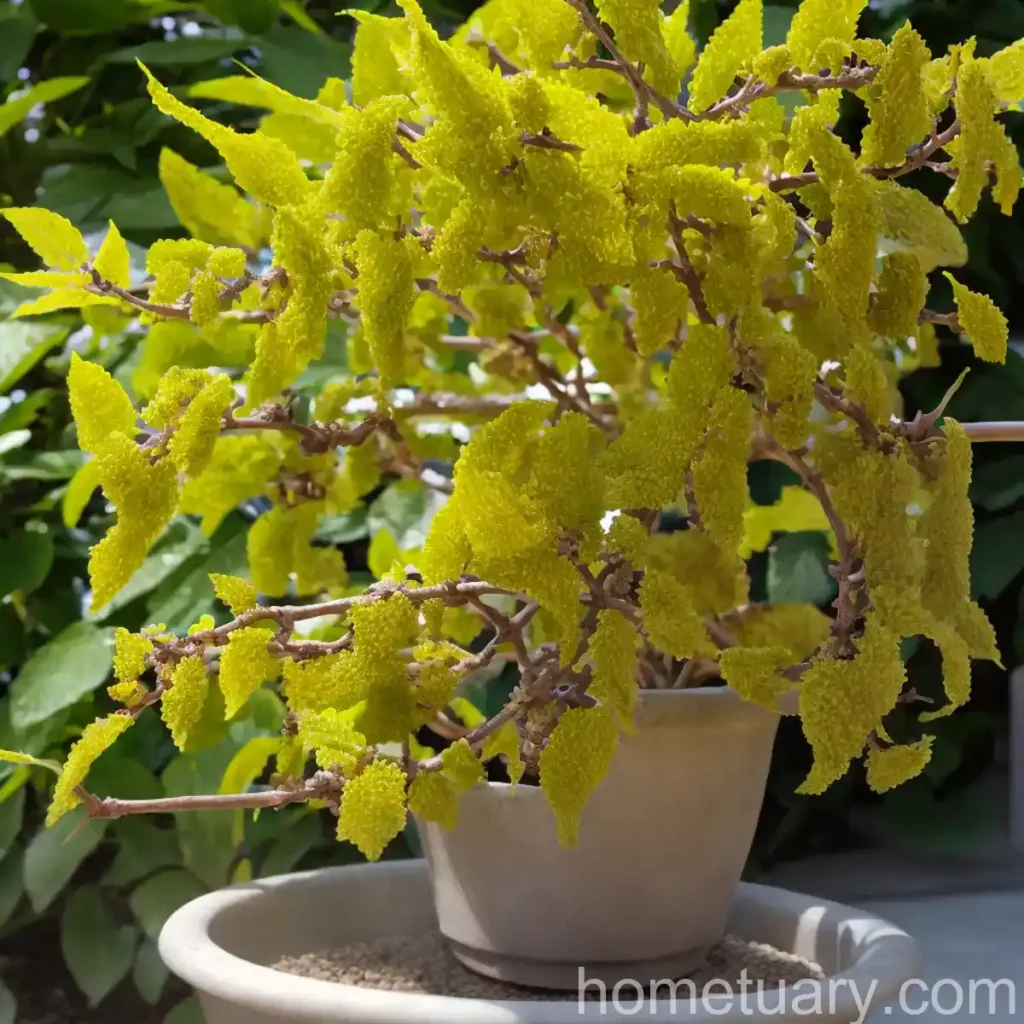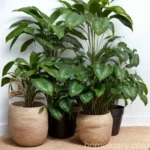West Indian Elm (Guazuma ulmifolia)
As a plant scientist, I find myself in awe of the incredible diversity and beauty of the plant kingdom. In this article, we delve into the fascinating world of the West Indian elm (Guazuma ulmifolia), exploring its characteristics, uses, care, and much more. This resilient and versatile tree has a rich history of traditional uses and environmental benefits, making it a valuable subject of study and admiration for plant enthusiasts and scientists alike.
What is the West Indian Elm (Guazuma ulmifolia)?
The West Indian elm, scientifically known as Guazuma ulmifolia, is a member of the Sterculiaceae family. It is native to tropical regions of the Americas, including parts of the Caribbean, Central America, and South America. Also referred to as the bay cedar, this tree is known for its rapid growth and its adaptability to diverse environmental conditions, including sandy or clay-rich soils. The West Indian elm is a deciduous tree, shedding its leaves during specific times of the year, and it produces small, five-petaled flowers with a distinct fragrance.
Key Takeaways – West Indian Elm (Guazuma ulmifolia)
Before delving into the various aspects of the West Indian elm, let’s take a quick look at some key takeaways about this remarkable tree:
- Benefits: The West Indian elm offers diverse environmental and medicinal benefits.
- Characteristics: It is a rapid-growing deciduous tree with distinctive five-petaled flowers.
- Tree Facts: West Indian elm has a rich history of traditional uses and cultural significance.
- Uses: It is utilized for a wide range of purposes, including traditional medicine and timber production.
- Medicinal Properties: The tree possesses medicinal properties, serving as a source of natural remedies.
- Habitat: It thrives in tropical regions, displaying adaptability to varying soil conditions.
- Tree Care: Proper care and maintenance are essential for the optimal growth of the West Indian elm.
Now, let’s explore the West Indian elm in more detail, covering its cultural significance, uses, care requirements, and more.
Culture
Traditional and Cultural Importance
The West Indian elm holds cultural significance in the regions where it is native. It has been utilized for various purposes by indigenous communities, ranging from medicinal uses to the crafting of traditional tools and objects. The tree has been an essential part of the local ecosystems, providing food and shelter for wildlife and serving as a valuable resource for the inhabitants of the surrounding areas.
Uses
Traditional and Medicinal Uses
The West Indian elm has a long history of traditional uses, particularly in traditional medicine. The bark, leaves, and other parts of the tree are utilized in natural remedies for a variety of ailments. In some cultures, the tree is valued for its anti-inflammatory and diuretic properties. Additionally, the wood of the West Indian elm has been used in traditional construction and woodworking, showcasing the tree’s versatility.
Timber Production
In addition to its traditional uses, the West Indian elm is valued for its timber. The wood of the tree is utilized in various applications, including furniture construction, cabinetry, and woodworking projects. The timber is known for its durability and attractive grain patterns, making it a sought-after material for crafting wooden items.
Water
Watering Needs
Like many tropical trees, the West Indian elm thrives in consistently moist soil, especially during its early growth stages. Adequate watering is crucial for the tree’s establishment and overall health. However, once the tree is established, it displays a degree of drought tolerance and can survive in moderately dry conditions. It is important to monitor the soil moisture level and provide supplemental watering during prolonged periods of drought to ensure the tree’s vitality.
Sunlight
Sun Requirements
The West Indian elm is a sun-loving tree, thriving in full sun conditions. It requires ample sunlight to support its vigorous growth and flowering. When selecting a planting location for the West Indian elm, it is essential to choose a spot that receives full sun exposure throughout the day. Insufficient sunlight exposure can lead to reduced growth and flowering, impacting the overall health and vigor of the tree.
Fertilizer
Fertilization Practices
Proper fertilization is instrumental in promoting the healthy growth of the West Indian elm. When cultivating the tree, it is advisable to utilize a balanced fertilizer with a slightly higher phosphorus content to support root development and flowering. Applying a slow-release fertilizer in the early spring can provide the tree with essential nutrients throughout the growing season. Additionally, organic matter, such as well-rotted compost, can be incorporated into the soil to enrich its fertility and support the tree’s overall vigor.
Soil
Soil Preferences
The West Indian elm is adaptable to a range of soil types, including loamy, sandy, and clay-rich soils. It thrives in well-drained soil with moderate fertility. However, the tree can tolerate occasional inundation and is suitable for areas with periodic flooding. When planting the West Indian elm, it is essential to ensure proper soil drainage to prevent waterlogging, which can have detrimental effects on the tree’s root system.
Pruning
Pruning Guidelines
Pruning plays a crucial role in shaping the growth of the West Indian elm and promoting its structural integrity. Regular pruning can help remove dead or diseased branches, improve air circulation within the canopy, and maintain the tree’s overall form. When pruning the West Indian elm, it is important to utilize sharp and sterilized tools to prevent the spread of diseases. Pruning during the dormant season is often recommended to minimize stress on the tree and promote efficient healing of pruning wounds.
Propagation
Propagation Methods
The West Indian elm can be propagated through various methods, including seed propagation and vegetative propagation. Seeds can be collected from mature fruits and sown in a suitable growing medium to cultivate new trees. Vegetative propagation, such as hardwood cuttings and air layering, can also be employed to propagate the tree. When propagating the West Indian elm, it is important to provide optimal growing conditions, including adequate moisture and warmth, to facilitate successful germination and establishment.
Container Popularity
Container Cultivation
While the West Indian elm is commonly grown in outdoor landscapes, it can also thrive in large containers or planters. Container cultivation allows individuals with limited outdoor space to enjoy the beauty and benefits of the tree. When cultivating the West Indian elm in containers, it is essential to select a spacious and well-draining container to accommodate the tree’s root system. Additionally, regular watering and fertilization are essential to support the tree’s growth and overall health in a containerized environment.
Common Diseases
Disease Diagnosis
Similar to many plant species, the West Indian elm is susceptible to certain diseases and disorders. Common diseases that can affect the tree include fungal infections, such as powdery mildew and leaf spot diseases, as well as bacterial infections. Additionally, root rot and other soil-borne pathogens can pose significant challenges to the tree’s health. Prompt diagnosis of any disease symptoms, such as leaf discoloration, wilting, or unusual growth patterns, is crucial for implementing appropriate management strategies and protecting the tree from further damage.
Common Pests
Pest Management
Various pests can pose threats to the West Indian elm, including insect pests and arthropods. Common pests that may affect the tree include aphids, caterpillars, and scale insects. These pests can cause damage to the foliage, stems, and overall health of the tree. Implementing integrated pest management practices, which may include natural predators, cultural controls, and targeted insecticides, can help manage pest populations and minimize their impact on the West Indian elm.
Botanist’s Tips
Expert Recommendations
As a plant scientist with a passion for the natural world, I offer the following expert tips for cultivating and caring for the West Indian elm:
- Planting Location: Select a well-drained and sunny planting location to promote the healthy growth and development of the West Indian elm.
- Soil Considerations: Ensure that the soil is suitable for the tree’s preferences, providing adequate fertility and drainage.
- Watering: Monitor the soil moisture and provide supplemental watering during dry periods to support the tree’s vitality.
- Pruning: Employ proper pruning techniques to maintain the tree’s form, remove diseased branches, and promote overall structural integrity.
- Disease and Pest Management: Stay vigilant for signs of diseases and pests, and implement appropriate management strategies to protect the tree.
Fun Facts
Did You Know?
- The West Indian elm is known for its rapid growth, often reaching impressive heights within a relatively short time frame.
- In some cultures, the tree holds significance as a symbol of strength, resilience, and natural beauty.
- The flowers of the West Indian elm emit a pleasant fragrance, attracting pollinators such as bees and butterflies.
Now that we’ve explored various aspects of the West Indian elm, from its cultural uses to its care requirements, let’s delve into some additional resources and information for those interested in learning more about this remarkable tree.
Links to External Resources
For further information on the West Indian elm (Guazuma ulmifolia), its characteristics, and cultivation, you may find the following resources valuable:
- United States Department of Agriculture (USDA) Plant Profile
- Missouri Botanical Garden – Guazuma ulmifolia
By exploring these resources, you can gain a deeper understanding of the West Indian elm and its unique attributes, further enriching your knowledge of this exceptional tree.
In conclusion, the West Indian elm (Guazuma ulmifolia) stands as a testament to the remarkable diversity and significance of plant life. Its cultural uses, environmental benefits, and sheer natural beauty make it a subject of both scientific inquiry and admiration. Whether you’re interested in its traditional uses, ecological significance, or cultivation practices, the West Indian elm continues to captivate and inspire plant enthusiasts and scientists worldwide. With proper care and appreciation for its value, this resilient tree can thrive and grace our landscapes for generations to come.















